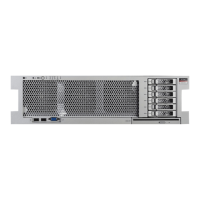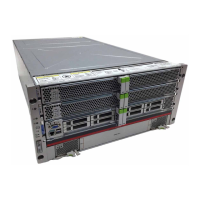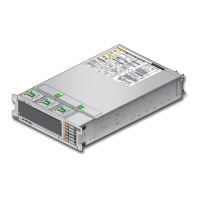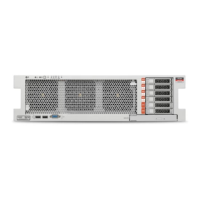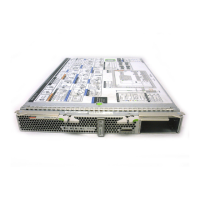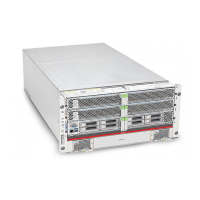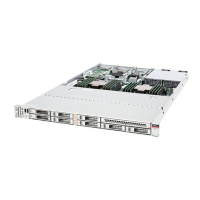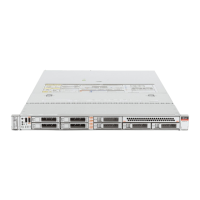Servicing PCIe Cards 149
Servicing PCIe Cards
PCIe cards are hot-service components that can be replaced at any time if the card is
not currently in use. For the location of the PCIe cards, see “Rear Panel Components
(Service)” on page 15.
Caution - To remove a PCIe card that is assigned to an I/O domain, first remove the device
from the I/O domain. Then, add the device to the root domain before you physically remove the
device from the system. These steps enable you to avoid a configuration that is unsupported by
the Direct I/O or SR-IOV feature. For more information about making hardware changes to an
I/O domain, refer to the Oracle VM for SPARC documentation.
These topics describe service procedures for the PCIe cards that are installed in the PCIe card
carriers in the server.
■
“Understanding PCIe Root Complex Connections” on page 149
■
“PCIe Card Installation Guidelines” on page 153
■
“PCIe Carrier LEDs and Controls” on page 154
■
“Determine Which PCIe Card Is Faulty” on page 155
■
“Remove a Card Carrier” on page 155
■
“Remove a PCIe Card” on page 159
■
“Remove a Carrier Extension” on page 162
■
“Install a Carrier Extension” on page 164
■
“Install a PCIe Card” on page 165
■
“Install a Card Carrier” on page 168
■
“Verify the PCIe Card” on page 171
Understanding PCIe Root Complex Connections
A root complex is the CMP circuitry that provides the base to a PCIe I/O fabric. Each PCIe I/
O fabric consists of the PCIe switches, PCIe slots, and leaf devices associated with the root
complex. Understanding the relationship of the PCIe root complexes to the PCIe I/O fabrics
will help you to properly assign devices when configuring Oracle VM Server for SPARC
logical domains.
These topics explain the root complex configurations:
